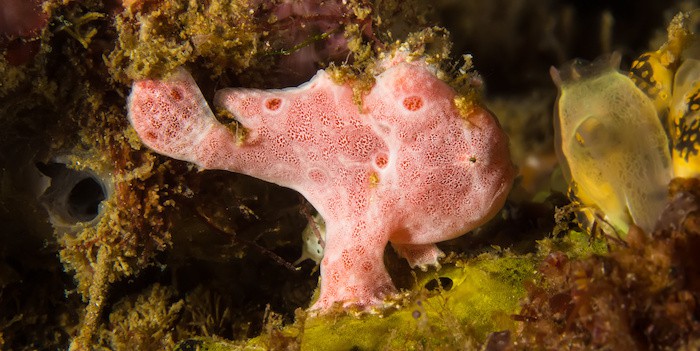Did you know that we are underwater photography friendly at all of our Two Fish Divers resorts? The Lembeh Strait is world-famous for its rare marine life and for the incredible underwater photography opportunities which they present. We want to help you to take home stunning images and to help you to improve your skills while you are with us.
Our teams are always on hand to help you out and we’re now also including a regular underwater photography Blog every month on our website. For many photographers, an SLR camera and underwater housing is too much of a financial commitment to justify but did you know that you can capture awesome images on a compact camera too? – in fact, our manager at Two Fish Lembeh is also shooting with a compact and taking many of the stunning images you see on our Lembeh Blogs!!

Compact cameras are capable of producing high quality images and are more affordable and easier to travel with than SLR’s
Are your images falling short of your expectations? Modern compact cameras are capable of taking high-quality images with stunning colours and incredible details. Here are our 6 top tips for getting the most out of your compact and taking images you’ll be proud of.
1. Get Close To Your Subject
It’s easy to think that you are closer to your subject than you really are. Take a look over the top of your camera and consider moving closer. As you move in, make sure you are shooting using the macro setting to get the best possible focus. Moving closer is especially important if you are relying on your cameras internal flash which won’t illuminate your subject if you are further away.

This sea horse is illuminated by the internal flash but it’s possible to see the limitations of the flash when you look at the surrounding seagrass which is not illuminated.
2. Take It Slow
As you start trying to get closer to your subject think about taking it slowly and giving the subject time to get used to you being in its space. Approaching slowly will help prevent the creature from being spooked and swimming away. Underwater photography is all about being patient!

Approach skittish critters slowly so they have time to adjust and don’t swim away.
3. Think About Your Background
Once you’ve spotted your subject think about the background and how you want to capture it. Aim to shoot from low down so your camera is angled up towards the subject – this will let the maximum available light into the shot. Never manipulate a critter into a “better” position. Move yourself around the critter to get the best available background.

An interesting background can take an image from good to great
4. Lighting For Underwater Photography
Adding light to your images will give you best possible colours and prevent shots from being “blued-out”. If you are using the cameras internal flash make sure you are as close as possible to the subject. Adding a single strobe (or two strobes) to your camera set up will give you more light and you’ll be able to take shots from further away. If you are not confident with a strobe, try using a video light for continuous illumination which you can see through the view finder.

Adding light to your images makes a huge difference. This can be done by adding a single strobe, double strobe or video light
5. Fix Your Buoyancy
If you are struggling with your buoyancy when trying to take pictures it’s unlikely you’ll get the underwater photography shots you are hoping for. Start by addressing your buoyancy issues first. This is especially important in Lembeh where the silty bottom composition is easily stirred up. Try to use your breathing to fine-tune your buoyancy, stay off the bottom and be prepared to add or release air from your BCD as needed.

Perfecting your buoyancy is essential to taking quality images.
6. Edit with Caution
There are a number of underwater photography editing software packages available; with the most commonly used ones being PhotoShop and Adobe LightRoom. These programs have fantastic capabilities for removing backscatter and correcting colours but they are no substitute for getting it right while underwater. Be careful when using saturation adjustments to improve colours – there is a fine line between enhancing an image and making it look unreal.

The Lembeh Strait presents incredible underwater photography opportunities. This flamboyant cuttlefish was shot with a compact camera and has been perfectly edited to enhance the colours.
Are you planning your next trip to Indonesia? Are you trying to decide when and where to visit us?
Want to dive and save?
Check out our latest special offers here!
Come and join us in tropical Indonesian and dive some of the most famous dive sites in the world! Let us help you plan your trip to dive in the locations that match your interests and underwater photography requirements. Fill in the form below and we’ll get right back to you!







